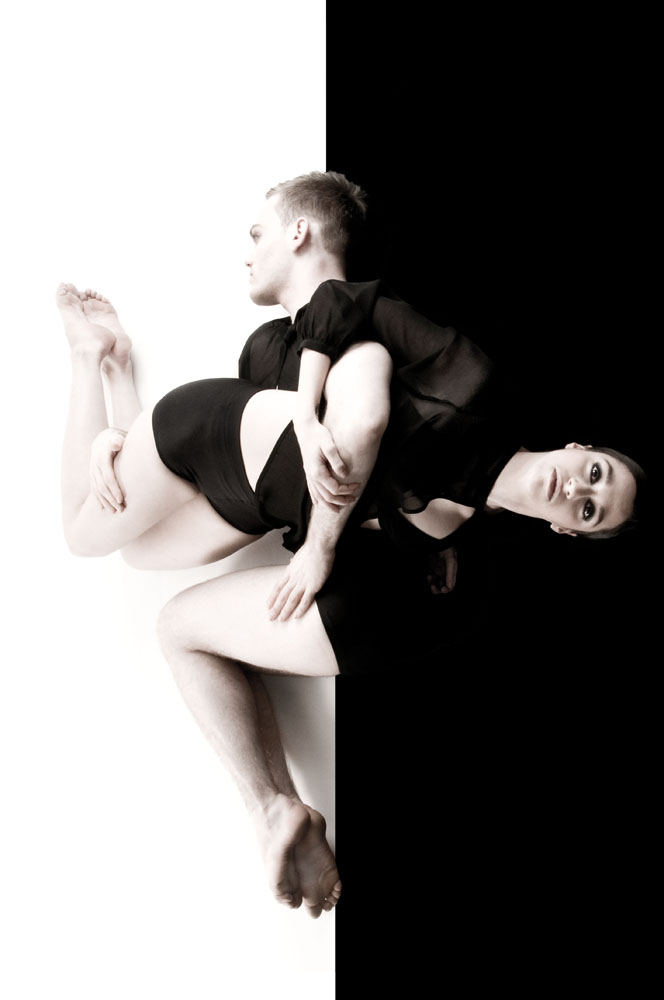
Picture: Mikah Smillie
“I’m in heaven… when we’re out together dancing cheek to cheek,” sang Fred Astaire, falling in step, and in celluloid love, with Ginger Rogers in Top Hat. It was Irving Berlin’s lyrics, written in 1935, which put into words the heady emotion felt by two people dancing together. Dance languages as diverse as ballet, ballroom, swing, and tango all necessitate a partner. Partner-work draws dancers together in an intense relationship of trust, synchronicity, and sensuality. It draws audiences into that relationship too.
It used to be the case that contemporary dance shunned the cosy twosome. The enduring images of abstract choreographers were of Martha Graham’s tortured solos or William Forsythe’s frenetic ensembles. Contemporary’s own specific movement vocabularies, like “release” or “Cunningham technique”, were self-referential, not always aesthetically appealing, and often alienating to those outside the dance world. Its self-styled intellectual rigour seemed to shun the simple beauty of two dancing as one.
But we are in the midst of a sea change in dance. Hip-hop is theatre, dance is primetime television entertainment, and the latest generation of contemporary choreographers is embracing the pas de deux with new ways of moving that are breathtakingly beautiful, athletic and technical, as well as emotionally moving.
The choreographic forerunner of these new style duets is Rafael Bonachela. The Rambert-trained Spaniard comes from the contemporary dance world, but rose to prominence outside of it, as the choreographer of Kylie Minogue’s Fever and Showgirl world tours. Bonachela choreographs dynamic, supple, sensual duets, as likely to be seen on the television show So You Think You Can Dance as on the stage at Sadler’s Wells or in Sydney, where he now works as Artistic Director of the Sydney Dance Company.
His duets employ awe-inspiring lifts and throws, as acrobatic as they are balletic. But they also use the fluidity of contemporary movement, and the intertwining that comes from contact improvisation to create something sinuous and sexy.
Venezuelan Javier de Frutos takes similar sorts of movements, but his duets push them in a more theatrical way, as seen in his 2011 collaboration with the Pet Shop Boys, The Most Incredible Thing. And Belgian Sidi Larbi Cherkaoui stretches movements of fluidity to the point of contortionism in his Ballet Russes tribute duet, Faun.
Now, the winners of two major choreography awards are taking this new language of contemporary duets in different directions again.
In James Cousins’ There We Have Been, the female dancer never touches the ground. She is lifted, cradled, lowered, twisted and held in the most ingenious of ways by her male partner. The emotionally intense duet won 22-year old Cousins the Matthew Bourne New Adventures Choreographer Award. A showcase of his work took place at Sadler’s Wells in September.
Inspired by Haruki Murakami’s novel Norwegian Wood, Cousins wanted his duet to give a glimpse into a very secluded world
“I love the focus that a duet gives me,” says Cousins. “I love working with the dancers to push their physicality, to find new connections, and to really explore the relationship they are portraying.” Inspired by Haruki Murakami’s novel Norwegian Wood, Cousins wanted his duet to give a glimpse into a very secluded world. “Instantly with a duet, the audience starts reading a relationship into it. A duet allows the audience to go on a journey with the two dancers without other distractions.”
Cousins contrasts contemporary duets to the classical ballet pas de deux. “In ballet, the lifts happen away from the body, with the female dancer trying to lift her weight up. And the main point of contact for the lifts is the hands. But in contemporary duets dancers use each other’s weight, momentum and centre of gravity to create a much more balanced duet. Any surface of the body can be used to lift or support, and this allows for more possibilities.”
Ihsan Rustem’s work State of Matter, which won him the 2011 Sadler’s Wells Global Dance Contest, is an exercise in impeccable control and elegance. Inspired by a poem, “The Clouds Inside”, by fellow dancer Benjamin Wardell, Rustem became fascinated by the comparison between people and clouds. “I wanted to see us on a journey dictated, like clouds, by the opposing forces of life which are often beyond our control.” The exquisite duet at the end of the piece depicts the calmness and serenity when storm clouds break.
“I especially enjoy creating duets,” says 30-year old Rustem, who trained at Rambert and currently dances at the Tanz Luzerner Theater. “Two people have to be on exactly the same path, and both have to be technically strong. Dancers have to be open to what the other is offering and be prepared to make adjustments in a split second, depending on the other dancer’s balance, weight and strength.”
Rustem argues that today’s choreographers not only benefit from the breaking down of boundaries between different dance disciplines, but the constantly improving technical strength, power and agility of dancers. “Nowadays, we have so many techniques to draw from when it comes to partnering. I trained in both classical and contemporary disciplines, and have found as much inspiration from keeping a woman en pointe as I have from discovering weight distribution in contact improvisation.”
The new duets combine the best of ballet, contemporary, acrobatics and dance theatre. And they put the humanity and feeling right back in the heart of contemporary dance. “When two dancers are moving together as one, I don’t believe this can be deemed ‘abstract’,” says Rustem. “We are watching humans creating poetry in motion, and this can only evoke some sense of emotion.”
www.ihsanrustem.com
www.jamescousinsdance.co.uk
Maria Yacoob is a dance teacher and choreographer based at Pineapple Studios. She has worked for the BBC, Sadler’s Wells, and on Sky One’s Got to Dance.


